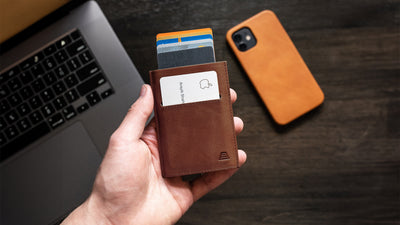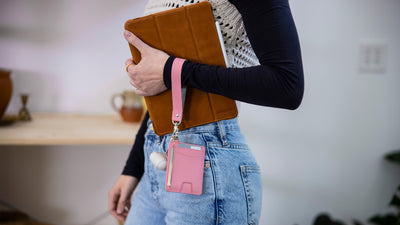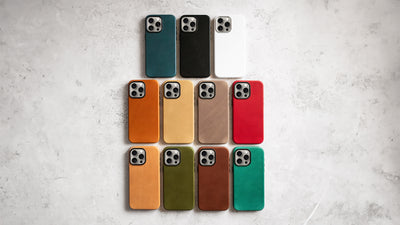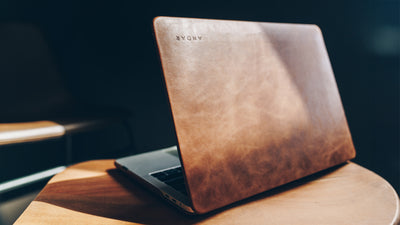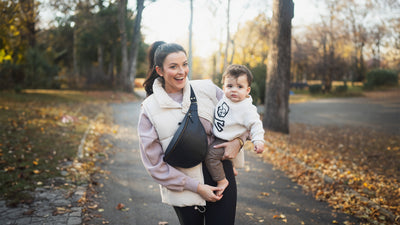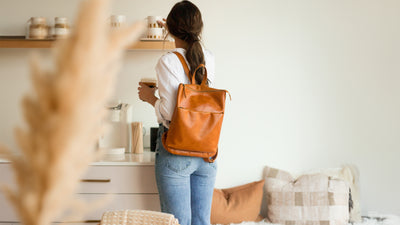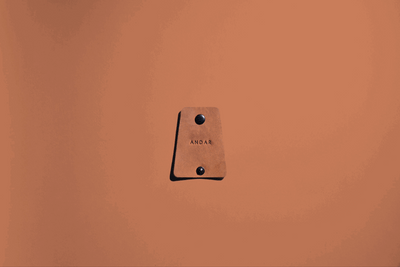The Blog
Can Leather Get Wet?
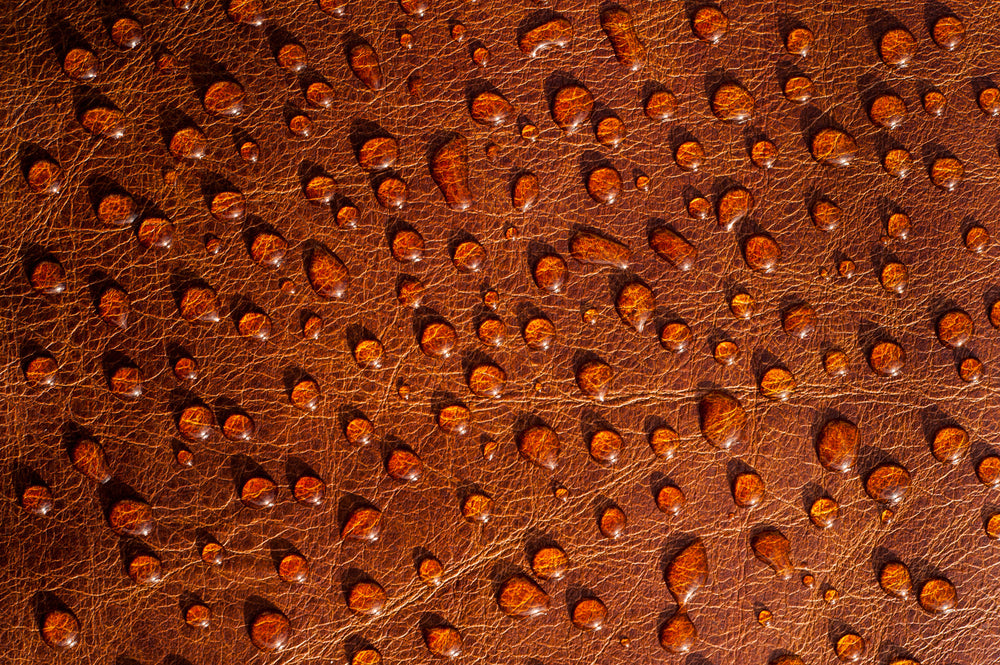
Leather goods are known for many things. Their sleek look, their soft feels, their timeless style, and of course, their longevity gives them just-as-lasting popularity. Good leather is built to endure and age beautifully while doing so.
What happens, though, when your favorite leather gets wet? Not all leathers are equal when it comes to being water-resistant. Water damage can create a whole host of issues for your leather products.
We encounter water daily, whether in meals or getting caught in rainfall. What you may not know, however, is that it’s raining more heavily and more often across the world. Suddenly, water doesn’t just become a hazard for your leathers but an inevitability. For circumstances like this, it’s important to know how to deal with the issues that the universal solvent can cause.
Andar is here to highlight what those issues are, how to treat them, and how to protect your leather for the future. We’ll also be highlighting how the quality of your leather can drastically impact its ability to resist water.
What Does Water Do To Leather?
First, we’ll highlight the worst water can do to the leather. The worst that water damage can do to your leather items doesn’t happen upon contact but upon drying. Part of what gives leathers their texture and sheen are the natural oils used in the manufacturing process. These include oils and tannins used to treat the material and oils inherent in the material itself.
When wet leather dries, some of these oils bind to the water molecules and evaporate with it. This can leave water stains on the surface of the leather and otherwise cause it to crack. Cracking can damage the appearance, flexibility, and ultimate quality of the leather.
Suede and Nubuck Leather
These negative attributes largely depend on the kind of leather you are working from. Low-quality leathers like bonded leather are most easily damaged. This is because these come from a weaker part of the leather material. The next most fragile type of leather is suede and nubuck leather.
These are made from the delicate underside of the material. It gives a robust, soft appearance but also makes them fragile to the elements. There are ways to protect suede, but we’ll discuss that later.
Full-Grain Leather
The most durable kind of leather, by far, is full-grain leather. Compared to other grades, full-grain leather is the least processed and, thus, the most naturally water-resistant. As a high-grade material, full-grain leathers are meant to last. Because of this, many leather products made from this material are otherwise pre-treated to waterproof them.
Final Factor: The Tanning Process
The tanning process of leather matters, too. Chrome-tanned leather, created with chemical treatments, is more water-resistant than vegetable-tanned leather. However, the latter holds up better on a day-to-day basis. If your leather products have just gotten wet, it’s time to start taking protective measures.
What To Do if Leather Gets Wet
If your leather gets wet, there is a specific process you can follow to help reduce the risk of permanent damage. The first step is to get a dry cloth and gently dab your product while it is still wet. You don’t want to disperse or blot the moisture, but wipe off the excess water.
In the case of leather shoes or leather bags, you may need to dry the inside. Wadded-up newspapers do a great job of absorbing moisture directly, meaning less water to dry.
From here, you’ll want to begin the drying process. Let your leather air dry to the point that it’s damp but not fully dried.
Air Dry
Air drying at room temperature is crucial. Artificial heat from a blow dryer or hairdryer can elevate the negative impact of water. It becomes a surefire way to negatively age your leather and cause it to harden and stiffen.
Similarly, avoid putting leather accessories in direct sunlight. This heat source can negatively impact the drying process and the natural grain and dyes used to help give leather its color.
Condition
When your leather is finally damp, take a clean cloth and apply some leather conditioner to it. Many conditioners exist, so take a look at the ingredients involved to get an idea of how they can help.
For example, our Leather Cream contains naturally occurring oils, lipids, and triple-distilled beeswax. The first two ingredients help restore lost oils from water evaporation and promote the flexibility and texture of leather. The beeswax offers waterproofing elements (that are far gentler than some waterproofing sprays).
Gently use circular motions to apply your conditioner of choice. At this point, you’ve done all you can to mitigate the potential damage of water. All that remains is to protect your leather.
How To Protect Leather From Water
The way to protect any leather from water largely depends on the type of leather. Your first step should be to take a lint-free cloth and clean the entire surface of the shoe. (At least, that’s what you should do with full-grain leather.)
Suede is a type of leather that's a little more delicate. Dedicated suede brushes exist to help clean the surface without damaging the fibers. From there, your goal will be to apply a conditioner and a waterproofing material. In the case of suede, most of these are liquid sprays.
To restore functionality, traditional conditioners and waterproofing materials will resemble cleans. After applying some form of leather cleaner, you can apply a conditioner with a damp cloth. In the case of beeswax cream, a conditioner can serve as a repellent as well as a way to maintain the item’s suppleness.
The Best in Full-Grain
Of course, in order to check that your leather needs protection, you should consider its design. In the case of The Brooklyn bag, the full-grain leather is already waxed. This makes it ready for any adventure you may have planned, short of traveling underwater.
With other leather goods, you’ll want to treat them before any contact with water occurs. The Brooklyn anticipates that need and saves you time. Every detail of the bag is fundamentally designed to last. This applies to everything from the brass hardware, to its handle, to its adjustable straps.
Longevity and versatility meet in this bag. To further showcase the confidence held in it, each bag comes with a one-year warranty. With rugged timber, chic camel tan, and classic jet black options available, it’s the modern evolution of the classic leather bag.
This highlights just one option of many that Andar has to offer. The best part: Each one is designed with the same attention to detail and desire for excellence.
Choosing Full-Grain, Real Leather That Lasts
Great leather is more than an aesthetic choice in the realm of fast fashion. It’s an investment that can stay with you for years. That value system informs everything Andar does in our creation of high-quality, high-fashion everyday essentials.
Everything from wallets to bags to Apple product cases can be found in our intentionally-designed collection. We don’t create items that take up space and gather dust in a closet only to be used periodically: Our leather products are meant to be used. Even though you may encounter dirt, dust, water, and more, it’s all a part of the adventure of daily living.
To answer the question we posed at the start: Can leather get wet? Absolutely, and now you know exactly what to do if and when it happens.
Sources:
It's Raining Harder in the U.S I Prevention Web
Vegetable Tannins Used in the Manufacture of Historic Leathers I National Library of Medicine
A Faster and More Effective Chrome Tanning Process Assisted by Microwave I RSC Advances
